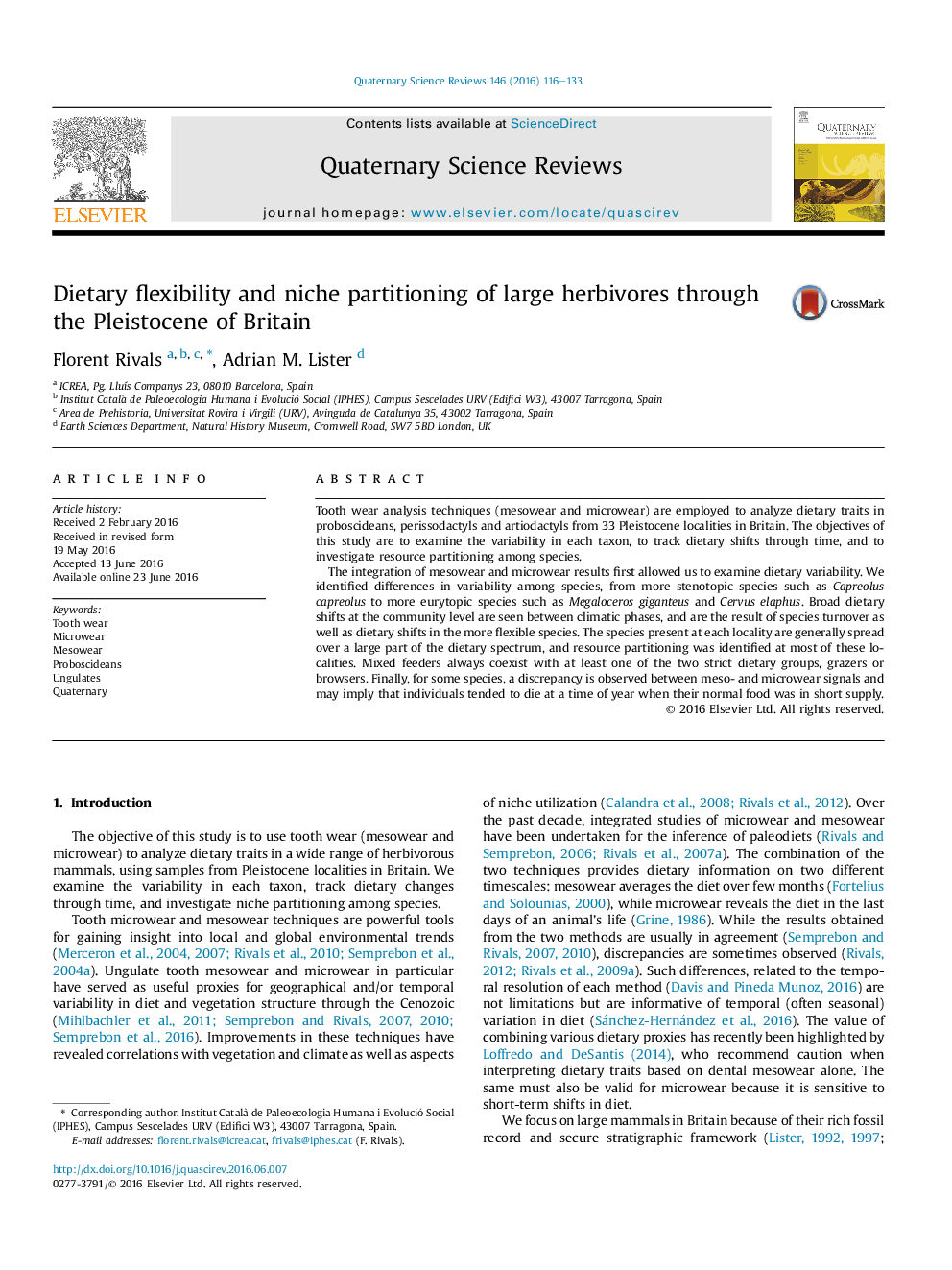| کد مقاله | کد نشریه | سال انتشار | مقاله انگلیسی | نسخه تمام متن |
|---|---|---|---|---|
| 4735268 | 1640789 | 2016 | 18 صفحه PDF | دانلود رایگان |
• Tooth wear analyses are used to infer diet in large herbivores from Pleistocene sites in Britain.
• Integration of mesowear and microwear results allowed to examine dietary variability.
• The dietary shifts are tracked and examined through time in each taxa.
• Interspecific differences are used to investigate resource partitioning among species.
Tooth wear analysis techniques (mesowear and microwear) are employed to analyze dietary traits in proboscideans, perissodactyls and artiodactyls from 33 Pleistocene localities in Britain. The objectives of this study are to examine the variability in each taxon, to track dietary shifts through time, and to investigate resource partitioning among species.The integration of mesowear and microwear results first allowed us to examine dietary variability. We identified differences in variability among species, from more stenotopic species such as Capreolus capreolus to more eurytopic species such as Megaloceros giganteus and Cervus elaphus. Broad dietary shifts at the community level are seen between climatic phases, and are the result of species turnover as well as dietary shifts in the more flexible species. The species present at each locality are generally spread over a large part of the dietary spectrum, and resource partitioning was identified at most of these localities. Mixed feeders always coexist with at least one of the two strict dietary groups, grazers or browsers. Finally, for some species, a discrepancy is observed between meso- and microwear signals and may imply that individuals tended to die at a time of year when their normal food was in short supply.
Journal: Quaternary Science Reviews - Volume 146, 15 August 2016, Pages 116–133
